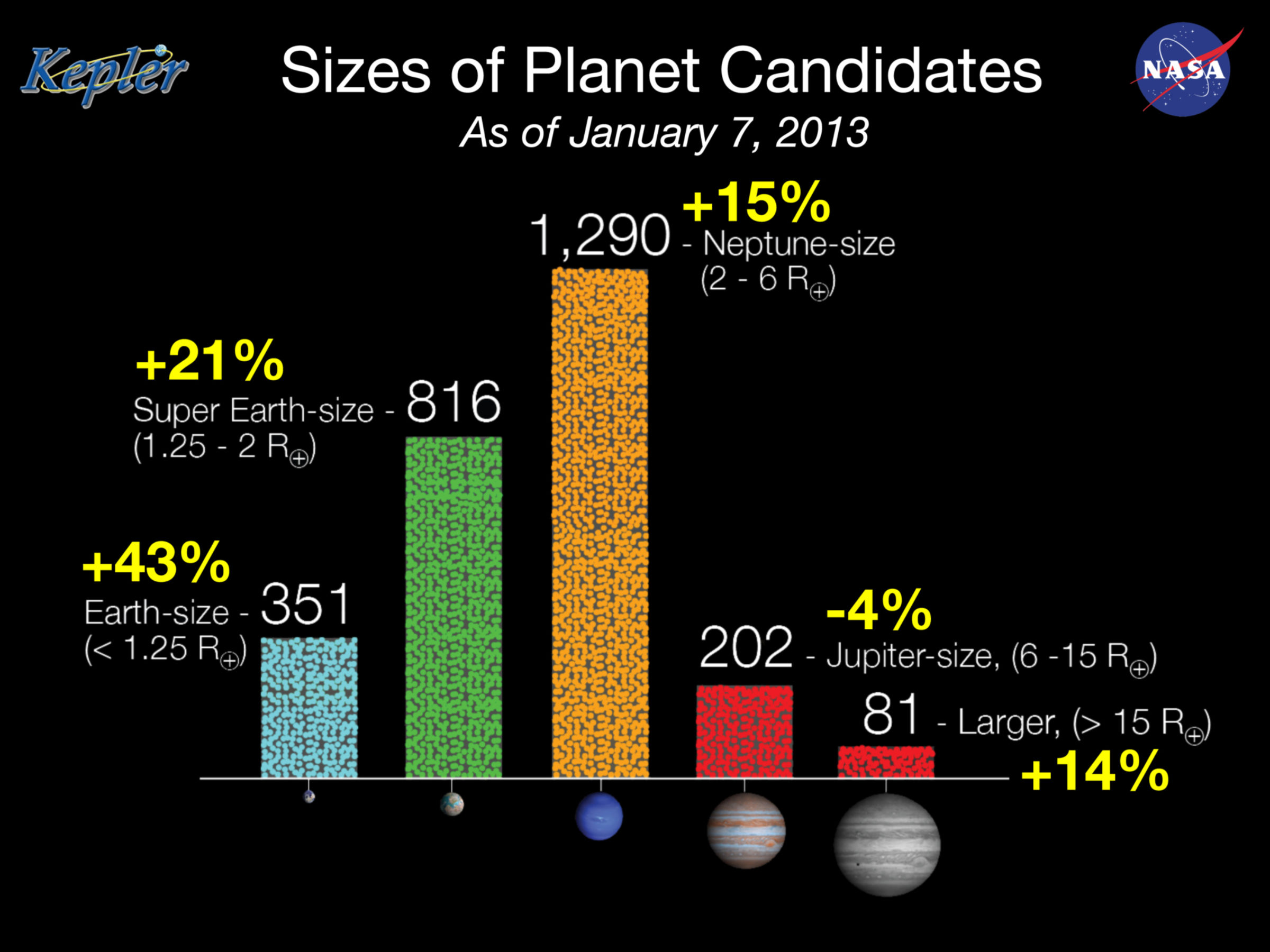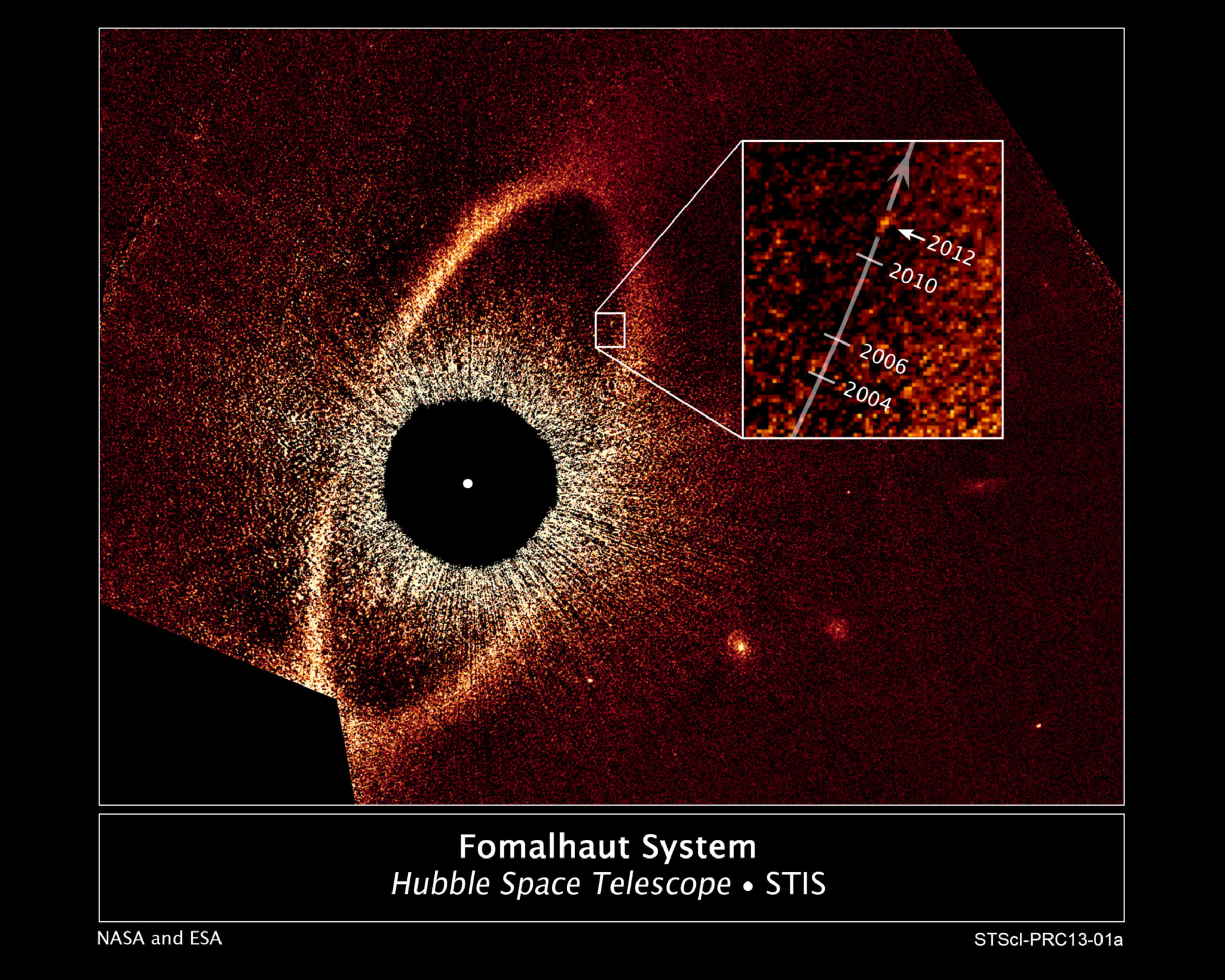Emily Lakdawalla • Jan 08, 2013
Report from AAS: Exoplanets (and exo-asteroids, and exo-comets) everywhere
This week the American Astronomical Society (AAS) is meeting in Long Beach. An astonishing fact about the 2013 meeting of the AAS: 30% of all the talks at this meeting are on exoplanets.
Just let that sink in for a moment. It wasn't that long ago that we didn't know if exoplanets existed or not. Now not only do we know they exist, we have directly detected thousands. Those thousands provide good enough statistics to estimate that there is roughly one planet for every star in the galaxy. 100 billion suns ~ 100 billion planets.
I'm getting a little ahead of myself. I do not ordinarily attend AAS because it's an astronomy meeting and I'm no kind of astronomer (I'm a geologist). But it was nearby this year so I decided to attend one day, and I watched a Kepler press briefing on the Web yesterday. Because I don't ordinarily pay attention to these topics, I can't give you the depth of insight I ordinarily bring to my posts. But the stuff being discussed here is so mind-boggling, I couldn't not write about it.
So yesterday there was the Kepler briefing. They updated their census of exoplanets -- a graphic is below -- and discussed the implications at length. For one thing, they now estimate that one in six stars hosts an Earth-sized planet. They're very careful to call these "Earth-size," not "Earth-like," because almost all of them are in "hot" orbits very close to their stars. But we're getting closer to "Earth-like"; detected planets are getting smaller, and they've recently found one super-Earth (about 1.5 times Earth's diameter) in the so-called "habitable zone" of its star, the region in which liquid water might be stable on a planet.
I do have to pause here to grumble that if there could be life on Europa or even Titan, the notion of a "habitable zone" that only considers habitable planents seems unnecessarily constraining.

But most exoplanet scientists don't particularly care if a planet is Earth-like or not; in fact, it's much more fun to consider the astonishing variety of planetary systems. There are planets around every kind of star. One Kepler result announced yesterday is that planets seem to be no more common around small stars than they are around large stars, which was, apparently, unexpected.
One cool set of exoplanetary systems discussed today was planets around white dwarfs, work presented at a press briefing by Ben Zuckerman. Thankfully he took time to educate me on what white dwarfs are -- they're old, very dense stellar remnants. With their high density and consequent high surface gravity, models say that all their "metals" (elements with higher atomic number than helium's 2) should be sequestered in a large core, and their atmospheres should be pure hydrogen and/or helium. Some white dwarfs fit this model, but many don't; their atmospheres are "polluted" to a lesser or greater extent. This pollution, Zuckerman said, is evidence of accreted debris -- ex-asteroid belts or ex-planets. (I was distracted for a few moments here as I considered the sad fates of those planets.)
What happens is that when the star blows off half its mass as it evolves from a red giant to a white dwarf, the sudden change of gravity in the central star destabilizes the planetary system. Giant planets shift orbits, and also their Hill spheres grow because they suddenly have larger gravity relative to their central star than they used to. Any "debris" in the system, in the form of smaller planets and asteroids and other stuff, gets thrown all over the place, and some amount of it winds up in the star. It actually doesn't have to be a very large amount of stuff to "pollute" the star's atmosphere enough for calcium lines to be detected in their spectra; John Debes explained that it could be a very small amount, equivalent to a 2-meter-diameter asteroid striking the star every second. I loved Debes' comment about how yesterday we heard there were planets everywhere. Today, he said, we're finding out that asteroids are everywhere, too. Another thing that blew my mind about Zuckerman's and Debes' presentations was that you could have new planets forming shortly before or shortly after the stellar "death" that produced the white dwarf.
At the other end of the stellar size scale, there were a couple of presentations today on new Hubble observations of Vega and Fomalhaut. Kate Su discussed the discovery of an asteroid belt at Vega, which is pretty neat. We already knew there was a cold debris disk at Vega -- something like our solar system's Kuiper belt -- the new result, from Hubble and Spitzer, is that Vega also has a warmer, closer, distinct asteroid belt. The two belts are separated by a clear area spanning the area from 14 to 90 AU; it looks very much like the proportions of our own solar system, just four times bigger. Su said that this clear area is likely maintained by as-yet-undiscovered planets, and if so, there must be at least two big planets. She showed that Vega is a near-twin to Fomalhaut, and that both are near-twins to a star named HR 8799. That comparison is significant because HR 8799 is known to have four massive planets. It's only a matter of time, she predicted, until we find massive planets at Vega (and, by implication, Fomalhaut).
Fomalhaut, in turn, was discussed by two presenters, Paul Kalas and James Graham, talking about their Hubble work spanning eight years. Fomalhaut is perhaps best known for hosting the first-ever directly-imaged exoplanet. But followup observations in 2010 showed the exoplanet to be in an unexpected position, a trajectory that suggested that it crossed Fomalhaut's orderly, circular, planar debris disk. That seemed impossible, and many (including, I have to admit, me) suggested that the "direct imaging" was an artifact of some kind. Also problematic was the fact that the object is visible in optical images but not infrared, where it should glow faintly from its intrinsic warmth.
Well, they've done more observations, and the 2012 ones clearly detect this object, and it's clearly on an elliptical orbit.

The other thing they've done since 2010 is extensive modeling to figure out how to reconcile all these observations. They showed that Fomalhaut b can be on an elliptical orbit that is inclined and therefore does not cross the circular belt. It will have a small effect on the belt -- it will perturb objects near the inner edge, so the inner edge will be more diffuse than it would be if Fomalhaut b were not there -- but it can coexist. Particularly if its mass is not too large. It's possible that Hubble is not seeing the planet itself but rather starlight reflected off of a dusty ring or "shroud." Then they asked the question: how large does this object need to be in order to hold enough dust to make it visible in this way? The surprising answer is that it need only be larger than Ceres, our largest asteroid,
Taking all of this together, Fomalhaut b is looking less like a traditional planet and more like a Centaur -- a smaller object that originated in a more distant circular orbit but was perturbed into one that crosses the circular orbits of other objects in the system. If it's as small as Ceres, it would mass less than the mass of the circular debris disk, so you'd have to ask which has greater gravitational influence -- Fomalhaut b, or the debris disk. There are still a lot of unknowns in this model; there is no empirical evidence yet for the existence of larger planets on more-circular orbits in the Fomalhaut system, only the circumstantial evidence of the neat shape of the debris disk.
I found myself smirking because I realized that if the above model actually represents reality, Fomalhaut b wouldn't be a planet according to the IAU definition. Fortunately(?) the IAU definition explicitly doesn't apply to exoplanetary systems!
That's all I have time for....time, now, to head to the poster session and schmooze, which is the main point of attending meetings in person anyway!
Let’s Go Beyond The Horizon
Every success in space exploration is the result of the community of space enthusiasts, like you, who believe it is important. You can help usher in the next great era of space exploration with your gift today.
Donate Today

 Explore Worlds
Explore Worlds Find Life
Find Life Defend Earth
Defend Earth

